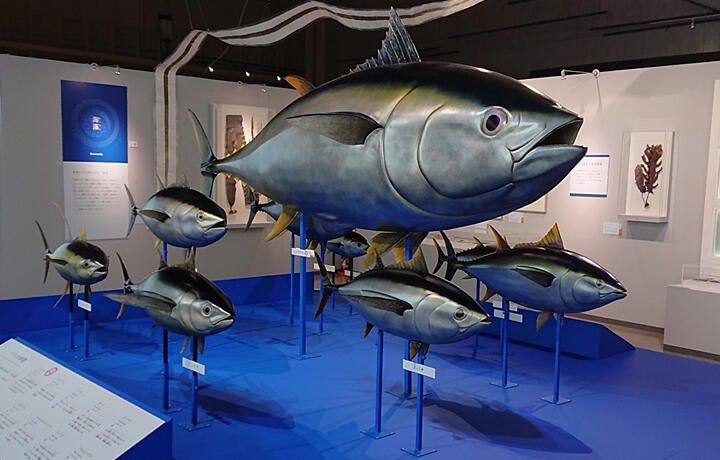It has been 10 years since "Washoku" (traditional Japanese food) was registered as a UNESCO Intangible Cultural Heritage in 2013. The special exhibition, titled "Washoku: Nature and Culture in Japanese Cuisine," is being held at the National Museum of Nature and Science. The event was originally planned for the Tokyo Olympics and Paralympics but was postponed because of the coronavirus pandemic.
Japanese people obtained their daily food through hunting and gathering during the Jōmon Period. Around the 10th century BC, rice cultivation was introduced to Japan from southern China, and with the start of the Yayoi Period, the prototype of Japanese food was formed. Although a culture in which rice is the staple food is also seen in the rice-growing regions of Southeast Asia, Japan has developed its own unique food culture by prohibiting meat consumption. The ban on eating meat was first issued in 675 and has been repeated many times ever since. The Japanese food style was formed, where rice was the staple food with fish products, seaweed, and vegetables as side dishes. Fermented foods such as miso (bean paste) and soy sauce, which are important components of Japanese cuisine, were incorporated into meals in the Heian Period.


The special exhibition of "Washoku" provides numerous materials to illustrate how the unique culture of Japanese food was formed, based on scientific viewpoints. Since Japan has a long north-south landform and holds unique biodiversity, including a diverse range of environments, the Japanese were able to obtain a variety of locally sourced foods. For example, there are approximately 3,000 types of mushrooms, and 100 types of wild edible vegetables, and more than 4,700 types of fish across the country. These ingredients differed from region to region, and a variety of Japanese foods were created through many kinds of innovations in each region.
One noticeable characteristic of Japanese cuisine is the intake of various types of seaweed. Although seaweed is distributed in oceans throughout the world and several types are consumed in some countries in Southeast Asia and South America, they are not placed on the dinner table in many other countries. Japan has 1,500 types of seaweed, 60 of which are regularly eaten, including those unique to each region. In particular, "Kombu" is rich in glutamic acid (the source of "umami" or "dashi") and used in a variety of dishes.
Another notable feature of Japanese food is fermentation. Ingredients essential to Japanese food, such as pickles and dried bonito flakes, were created from the fermentation expertise of skilled Japanese individuals. The association of the process with "Koji" mold (Aspergillus oryzae), which is the basic fermentation component, dates back to the Muromachi Period when there were Koji sellers. At the time, the Imperial Court and the Shogunate government controlled the distribution of Koji mold. Sake and "shochu" (distilled spirits) were also created through the use of the Koji mold. The exhibition provides explanations of the sake, soy sauce, and miso manufacturing processes and shows the differences in the final products depending on the production methods used.
The museum also showcases how Japanese food has changed throughout history, including the periods of Yayoi, Kofun, Nara, Heian, Kamakura, Muromachi, Sengoku, Edo, and modern times. It also displays the cuisine of Himiko and the reception meals of Nobunaga Oda, both of which were reproduced for the present exhibition.
Although Japanese food is highly regarded in the world and has become popular overseas as a healthy food, the opportunities for modern Japanese to eat traditional Japanese food have decreased owing to an increase in bread intake and the westernization of meals. The special exhibition provides a great opportunity to reconsider the attractiveness of traditional Japanese food and the depth of Japanese culture. The event will run until February 25, 2024.
This article has been translated by JST with permission from The Science News Ltd. (https://sci-news.co.jp/). Unauthorized reproduction of the article and photographs is prohibited.




